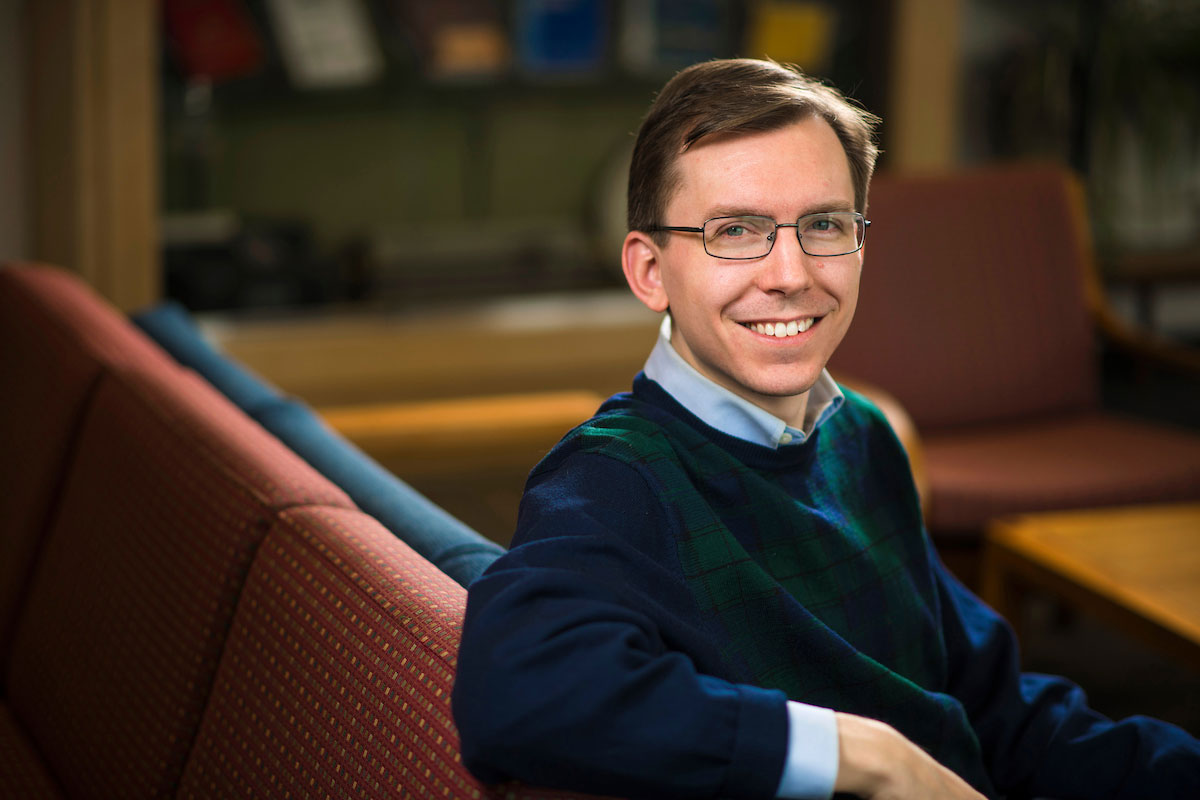
Kashlak completed his PhD in mathematical analysis at the University of Cambridge in the United Kingdom, and serendipitously, a faculty position opened at the U of A shortly after.
In the midst of completing his bachelor of science in pure mathematics at McGill University, Adam Kashlak took his first statistics course. His thoughts were summed up in three little words: "This is terrible."
Little did he know, two graduate degrees and three countries later, he would become an assistant professor of statistics and mathematics at the University of Alberta, sharing his love for both pure math and real-world stats with undergraduate and graduate students alike.
A science and an art
"After I finished my master's at Johns Hopkins University in the United States I realized that, while I wasn't paying attention, I'd sort of become a statistician," said Kashlak with a laugh. "I discovered that I actually really like statistics. There's both an art and a science to them. I can do pure math and talk about theorems and proofs and all of that, but I can also get my hands dirty with data. It's the ideal combination."
Kashlak completed his PhD in mathematical analysis at the University of Cambridge in the United Kingdom. His research involved statistical inference of data structure, in both high-dimensional and infinite-dimensional settings. It was there that Kashlak was introduced to Linglong Kong, professor in the Department of Mathematical and Statistical Sciences at the University of Alberta. Together, they began a research collaboration using the power of statistics to predict gene expression in human DNA.
Balancing act
"So much of statistics in general are all based around the idea of covariance structure in data," explained Kashlak. "We're looking at estimating this structure. If we use this tool to plug into other data sets and method, how well does it do? How generalizable is it? How effective?"
In a moment of serendipity, a faculty position opened shortly after Kashlak's completion of his PhD. The rest, he says, is history. Now at the University of Alberta, Kashlak's office is right next door to Kong's. The pair plan to continue their research collaboration.
As for teaching, Kashlak is currently teaching an undergraduate course in applied regression analysis. In the winter, he'll tackle his first graduate course, a design of experiments in statistics.
"In general, I'm always trying to balance my pure math and my statistics interests," said Kashlak. "I have one foot in the applied world and one foot in the theoretical math world. I'm looking forward to helping my students strike that balance as well."